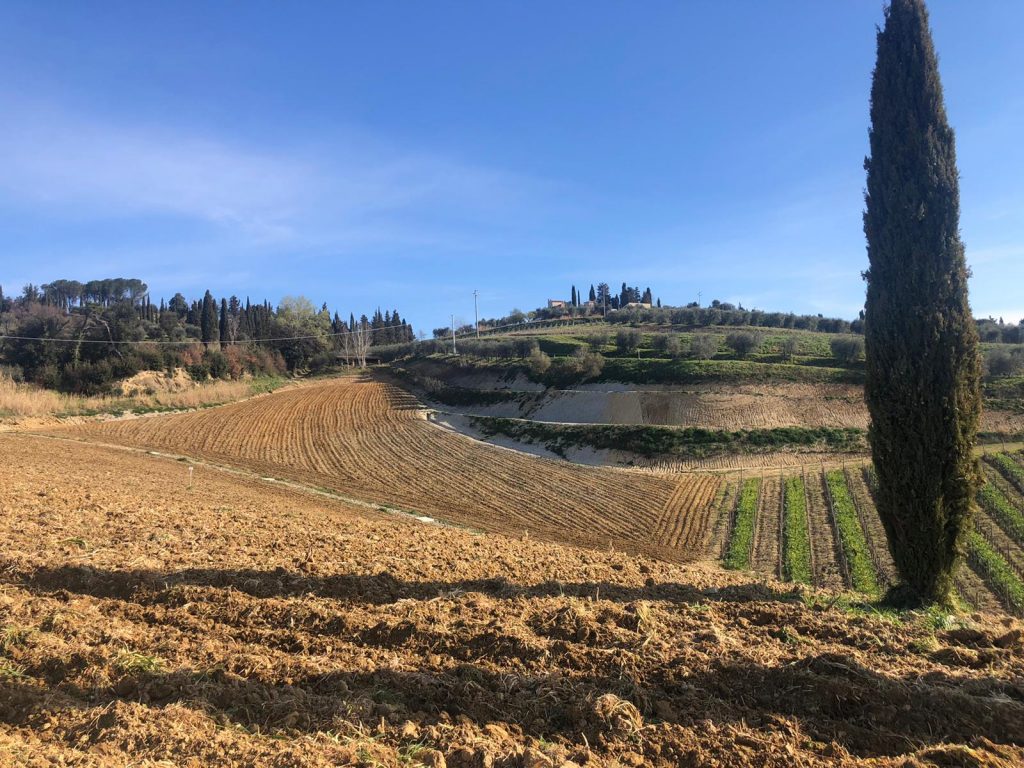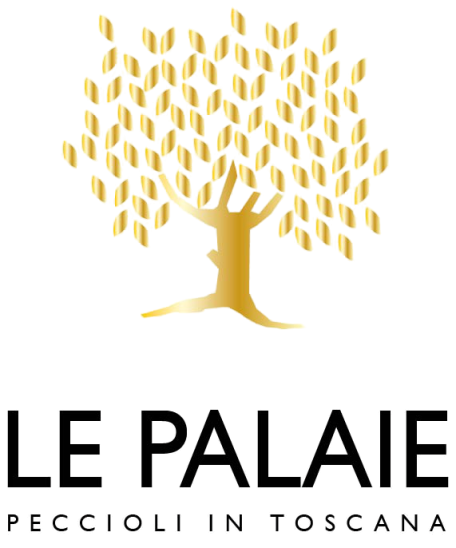Le Palaie: our Tuscan vineyards
Vineyards
Le Palaie: our Tuscan vineyards
We farm twenty hectares of land, of which fifteen are owned by Le Palaie estate and the other five are rented. This farmland is rich in history, traditions, stories and expresses love for a land of wine. Walking amongst the rows of vines and touching the plants and grapes never fails to arouse strong emotions.
The vineyards of Le Palaie are the cradle in which a range of wines are produced: from Merlot to Cabernet, Sauvignon and Franc, from Petit Verdot to Sangiovese, from Viognirer to Canaiolo, from Colorino to Malvasia Nera and Bianca, from Colombana to Trebbiano, from Procanico to Canaiolo Bianco and Alicante.
Constant care from autumn to spring
Immediately after harvest in October, as temperatures fall, we begin work deep-tilling the soil in the vineyards of Le Palaie to prepare the sowing bed. A combination of seeds for beans, favino, peas, mustard and wheat are planted. These are some of the legume crops that are used as green manure to restore the nutrients absorbed by the vines through the summer.
Around January the vine shoots are pruned and then trained on trellises. After pruning the cuttings are composted and contribute to feeding the land but if they have any diseases they are burned instead. The next phase is tying, the vines are trained around the trellis and tied, both the lower branches and those above, to give new shape to the plant.
With the return of Spring, between the end of April and the beginning of May, after buds have broken we proceed with the ‘scacchiatura’, also known as green pruning where unwanted buds are rubbed off and we decide which shoots should grow. In order to have a healthy plant 6 to 8 shoots are usually kept. At the same time organic treatment is provided.
The vines are never left to fend for themselves. The selection process continues through June to the start of July. This is when all the “pampini”, excess foliage and other plant growth that does not bear fruit and create humidity, are removed.
In young vineyards, those less than ten years of age, we carry out, ‘cimatura’; since grapevines are by nature climbing plants, they require constant attention so the tops need to be clipped. Instead, in older vineyards we go ahead with ‘capannatura’ training the top shoots to form a canopy.
Growing methods
The farmers and oenologists at Le Palaie follow traditional methods, ones that have remained unchanged through time.
The Guyot system changes and improves the plant as it grows; it is the approach commonly used for the production of commercial wine and involves the renewal of the fruiting arm every year, for example with Sangiovese grapes.
When the buds break we employ the spurred cordon technique but this requires particular conditions: the cordons must be below 1 metre in height and not have more than two canes while the distance between rows must be less than a metre. This technique is preferred for Merlot and Cabernet varietals and only the green growth is renewed.
In Tuscany the typical system, with the building of an arch supported on a trellis, is used in the 5 hectares that Le Palaie estate has rented. The land has 60-year-old plants. Here the rows of vines are in arches.
Technology
Le Palaie estates uses a system called Decision Support System (Dss), this is software that supports growers and oenologists in the decision-making process, evaluating a series of variables, first and foremost those related to the weather conditions.
The weather sensors are especially helpful, as the data collected is input into the system to help decide what actions to take.
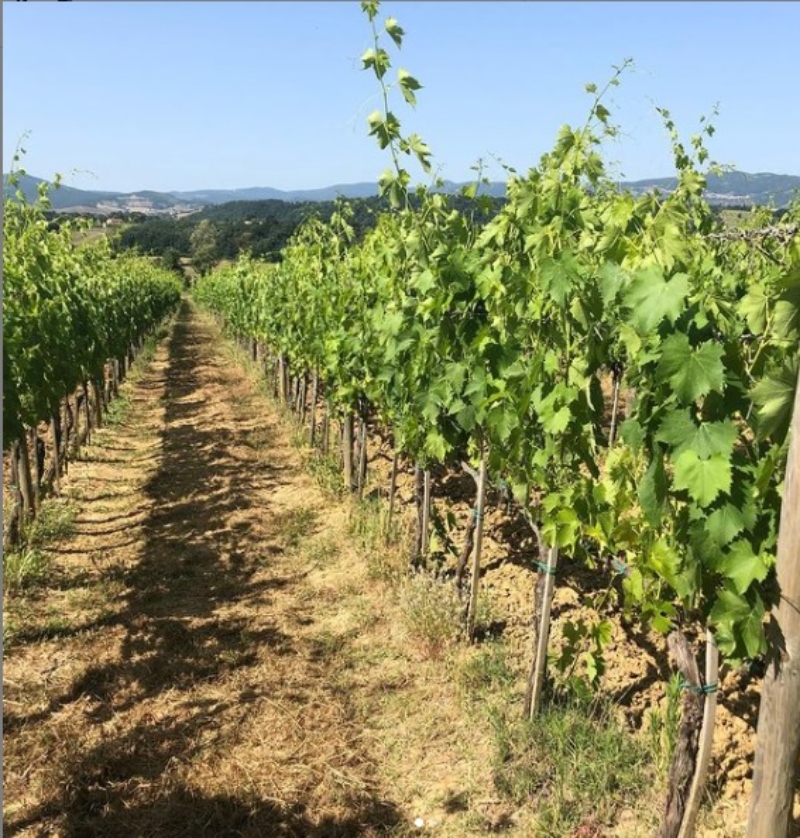
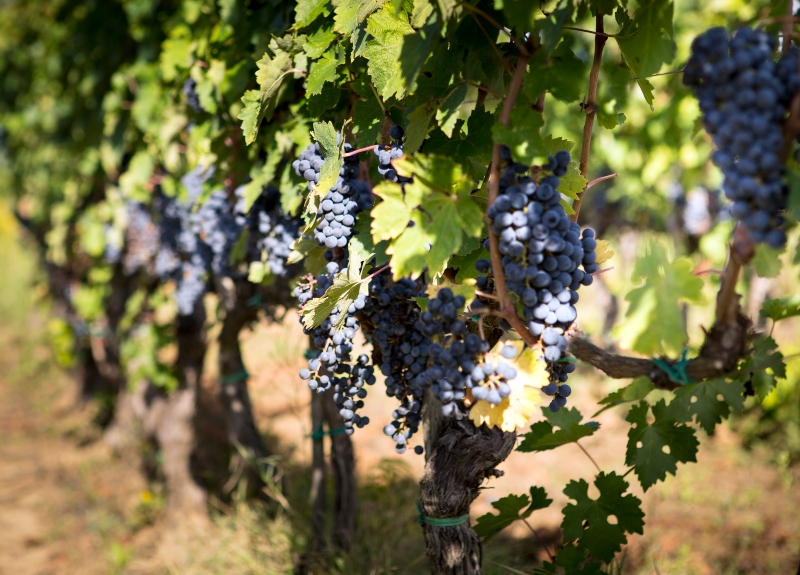
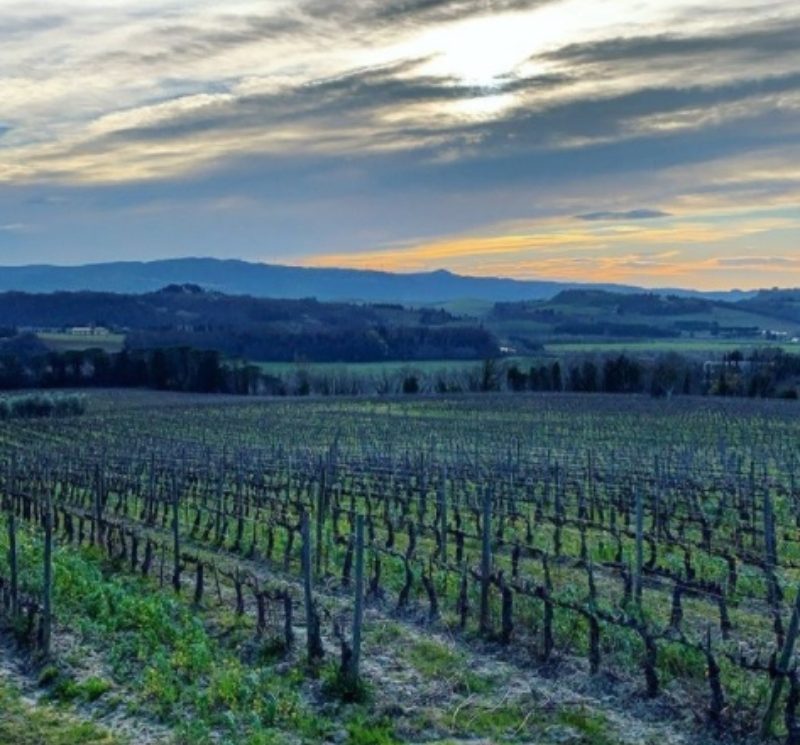
The land
The soil of Le Palaie estate is of marine origin, it is mainly sandy with large veins of clay. It is not unusual to find sea fossils in the vineyard and we often come across small seashells. It is this geological characteristic that gives the soil the salinity that distinguishes Le Palaie’s wines.
The varietals
Vigor was originally from Croatia from where it was exported to France by the Roman Emperor Marcus Aurelius Probo. By 1964 it had almost disappeared: there were only 8 hectares of vines in all the world, now it is in the top ten varietals grown but very few producers use it for single varietal wines.
Alicante is derived from the Pisan Colorino, a type of grape called ‘tintoria’ because the pulp has a red tint. Around the year 1000, pilgrims travelling the via Francigena, would take souvenirs of their travels and often these would be vines which would then be planted by the pilgrims upon their return home.
It is thus that Colorino, gave rise to the Alicante, Drainage, Tignanello and Cannonau grapes.
Procanico is a trebbiano which, once it has ripened, becomes pink and is very fleshy in the mouth: this is a progenitor of today’s Trebbiano.
Malvasie family of grapes are very aromatic. Passito di Colombana is a varietal entered in the national register of varietals as verdea. It is originally from the area of Peccioli, in the province of Pisa: the story goes that the 7th-century Irish Saint, Columbanus, planted a series of vines in Peccioli and started this crop.
In the past farmers would leave Colombana grapes on the vine and eat them whilst working. However, once they discovered its quality in vinification it was harvested, usually between mid-October and the beginning of November around the time of Saint Columbanus’s feast day.
Chianti comes from the area between Florence and Siena. It may come as a surprise to learn that the earliest Chiantis were white wine. In 1872 baron Bettino Ricasoli, from Florence (where he was also the mayor and second Prime Minister of recently unified Italy, after the death of Camillo Benso Count of Cavour) is ascribed with creating the recipe for a wine of great quality, capable of competing with French ones. It contained 75% Sangiovese wine (Sangioveto, as he wrote it in his recipe) and the remainder a blend of other grapes, both red and white.
Based on this combination, Tuscan farmers started planting other varietals in the Sangiovese vineyard. When Le Palaie started renting the 5 hectares of land it found all kinds of vines. We thought why not continue with the history and tradition? So it was that we chose vinification of white and red for Chianti, in honour of Ricasoli’s recipe.
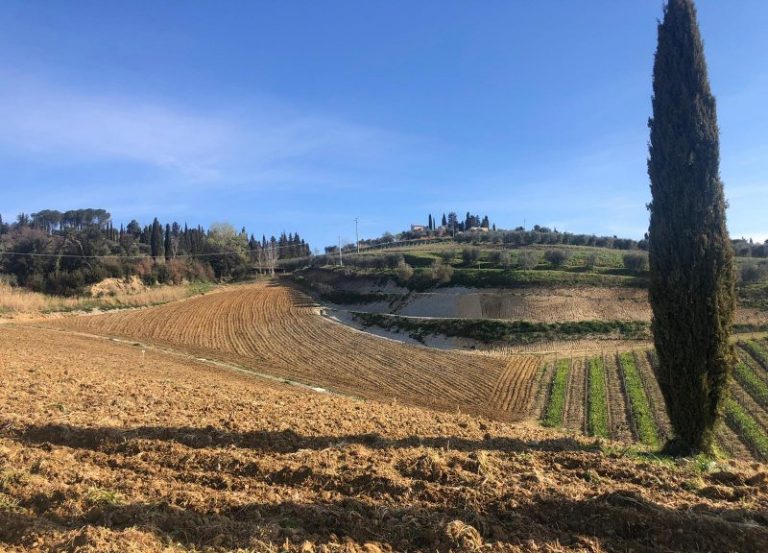
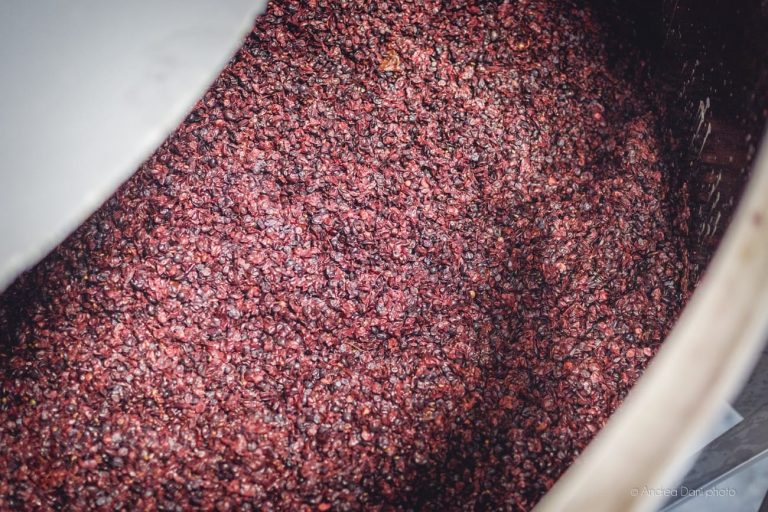
Le Palaie: our Tuscan vineyards
We farm twenty hectares of land, of which fifteen are owned by Le Palaie estate and the other five are rented. This farmland is rich in history, traditions, stories and expresses love for a land of wine. Walking amongst the rows of vines and touching the plants and grapes never fails to arouse strong emotions.
The vineyards of Le Palaie are the cradle in which a range of wines are produced: from Merlot to Cabernet, Sauvignon and Franc, from Petit Verdot to Sangiovese, from Viognirer to Canaiolo, from Colorino to Malvasia Nera and Bianca, from Colombana to Trebbiano, from Procanico to Canaiolo Bianco and Alicante.
Constant care from autumn to spring
Immediately after harvest in October, as temperatures fall, we begin work deep-tilling the soil in the vineyards of Le Palaie to prepare the sowing bed. A combination of seeds for beans, favino, peas, mustard and wheat are planted. These are some of the legume crops that are used as green manure to restore the nutrients absorbed by the vines through the summer.
Around January the vine shoots are pruned and then trained on trellises. After pruning the cuttings are composted and contribute to feeding the land but if they have any diseases they are burned instead. The next phase is tying, the vines are trained around the trellis and tied, both the lower branches and those above, to give new shape to the plant.
With the return of Spring, between the end of April and the beginning of May, after buds have broken we proceed with the ‘scacchiatura’, also known as green pruning where unwanted buds are rubbed off and we decide which shoots should grow. In order to have a healthy plant 6 to 8 shoots are usually kept. At the same time organic treatment is provided.
The vines are never left to fend for themselves. The selection process continues through June to the start of July. This is when all the “pampini”, excess foliage and other plant growth that does not bear fruit and create humidity, are removed.
In young vineyards, those less than ten years of age, we carry out, ‘cimatura’; since grapevines are by nature climbing plants, they require constant attention so the tops need to be clipped. Instead, in older vineyards we go ahead with ‘capannatura’ training the top shoots to form a canopy.
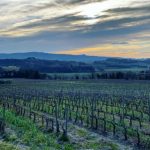
Growing methods
The farmers and oenologists at Le Palaie follow traditional methods, ones that have remained unchanged through time.
The Guyot system changes and improves the plant as it grows; it is the approach commonly used for the production of commercial wine and involves the renewal of the fruiting arm every year, for example with Sangiovese grapes.
When the buds break we employ the spurred cordon technique but this requires particular conditions: the cordons must be below 1 metre in height and not have more than two canes while the distance between rows must be less than a metre. This technique is preferred for Merlot and Cabernet varietals and only the green growth is renewed.
In Tuscany the typical system, with the building of an arch supported on a trellis, is used in the 5 hectares that Le Palaie estate has rented. The land has 60-year-old plants. Here the rows of vines are in arches.
Technology
Le Palaie estates uses a system called Decision Support System (Dss), this is software that supports growers and oenologists in the decision-making process, evaluating a series of variables, first and foremost those related to the weather conditions.
The weather sensors are especially helpful, as the data collected is input into the system to help decide what actions to take.

The land
The soil of Le Palaie estate is of marine origin, it is mainly sandy with large veins of clay. It is not unusual to find sea fossils in the vineyard and we often come across small seashells. It is this geological characteristic that gives the soil the salinity that distinguishes Le Palaie’s wines.
The varietals
Vigor was originally from Croatia from where it was exported to France by the Roman Emperor Marcus Aurelius Probo. By 1964 it had almost disappeared: there were only 8 hectares of vines in all the world, now it is in the top ten varietals grown but very few producers use it for single varietal wines.
Alicante is derived from the Pisan Colorino, a type of grape called ‘tintoria’ because the pulp has a red tint. Around the year 1000, pilgrims travelling the via Francigena, would take souvenirs of their travels and often these would be vines which would then be planted by the pilgrims upon their return home.
It is thus that Colorino, gave rise to the Alicante, Drainage, Tignanello and Cannonau grapes.
Procanico is a trebbiano which, once it has ripened, becomes pink and is very fleshy in the mouth: this is a progenitor of today’s Trebbiano.
Malvasie family of grapes are very aromatic. Passito di Colombana is a varietal entered in the national register of varietals as verdea. It is originally from the area of Peccioli, in the province of Pisa: the story goes that the 7th-century Irish Saint, Columbanus, planted a series of vines in Peccioli and started this crop.
In the past farmers would leave Colombana grapes on the vine and eat them whilst working. However, once they discovered its quality in vinification it was harvested, usually between mid-October and the beginning of November around the time of Saint Columbanus’s feast day.
Chianti comes from the area between Florence and Siena. It may come as a surprise to learn that the earliest Chiantis were white wine. In 1872 baron Bettino Ricasoli, from Florence (where he was also the mayor and second Prime Minister of recently unified Italy, after the death of Camillo Benso Count of Cavour) is ascribed with creating the recipe for a wine of great quality, capable of competing with French ones. It contained 75% Sangiovese wine (Sangioveto, as he wrote it in his recipe) and the remainder a blend of other grapes, both red and white.
Based on this combination, Tuscan farmers started planting other varietals in the Sangiovese vineyard. When Le Palaie started renting the 5 hectares of land it found all kinds of vines. We thought why not continue with the history and tradition? So it was that we chose vinification of white and red for Chianti, in honour of Ricasoli’s recipe.


